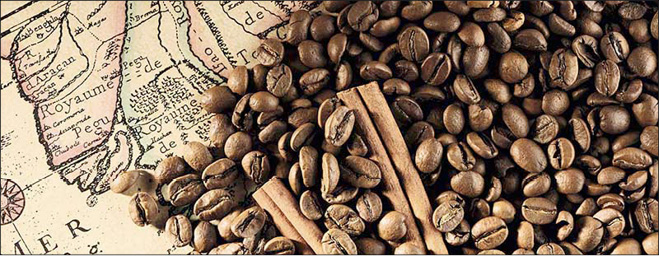History
Herbs and spices are as intriguing today as they were 400 years ago when the exploration of the world was driven by the fabulous wealth created by a lucrative international trade. The early silk and spice routes from east to west were monopolized by Arab traders and various countries and city states in the western Mediterranean region, who all shared in the rich bounty.

Spices first reached Constantinople and Alexandria, from where they were taken to Venice, Naples and Genoa in Italy, and from there to the rest of Europe. Spices were in high demand because of the poor quality of the food and the lack of a means to preserve meat, other than salt. During the medieval spice craze, shortages in supply resulted in a diversity of local spices that were used as substitutes or adulterants. The role of local, indigenous herbs and spices such as alecost and Melegueta pepper is now just a distant memory, as they were almost completely replaced by hops and black pepper respectively. Also long forgotten is the fact that the enormous spice wealth in northern Italy and the rich people who patronized architects, artists, authors and philosophers actually created the Renaissance. The overland monopolies were broken by the development of alternative sea routes, and colonial powers such as Portugal, Spain, the Netherlands, France and Britain all controlled and defended their access to spices and associated source areas at one time or another. Key moments were 12 October 1492, when the Spanish explorer Columbus reached the Bahamas and “discovered” aji (chilli peppers) and 20 May 1498, when the Portuguese sailor Vasco da Gama stepped ashore at Calicut in India, thus establishing a sea route to the east around the Cape of Good Hope. This was the Age of Discovery, an exciting but brutal time during which the full extent of the earth and its rich bounty of culinary delights became much better known. The profound effects that the spice trade has had on determining where and how we live and eat today is no longer much thought about but it is true to say that spices were the driving force that changed and opened up the world.
The famous East Indies (including India, Sri Lanka, Malaysia and Indonesia) supplied important tropical spices such as cardamom, cinnamon, cloves, ginger, mace, nutmeg and especially pepper to satisfy the huge demand in Europe, where the lack of a tropical climate prevented local production. The same is true for chocolate, vanilla and allspice from the New World, including Mexico and Central America. Maize, potatoes and chilli peppers were distributed by Portuguese sailors from the New World to the Old World (Europe, Africa and Asia), where they quickly became important crop plants and consequently a non-indigenous part of many local food cultures. The East Indian spice monopoly was eventually broken by horticultural innovations, led by the French, who established plantations of pepper, nutmeg, cinnamon and other valuable spices on tropical islands such as French Guiana, French Polynesia, Réunion, Seychelles and Madagascar. The use of refrigeration and other means of food preservation further reduced the central role of spices in international trade.